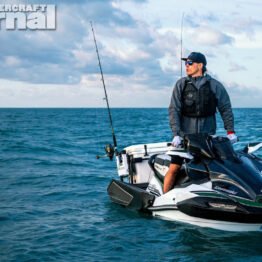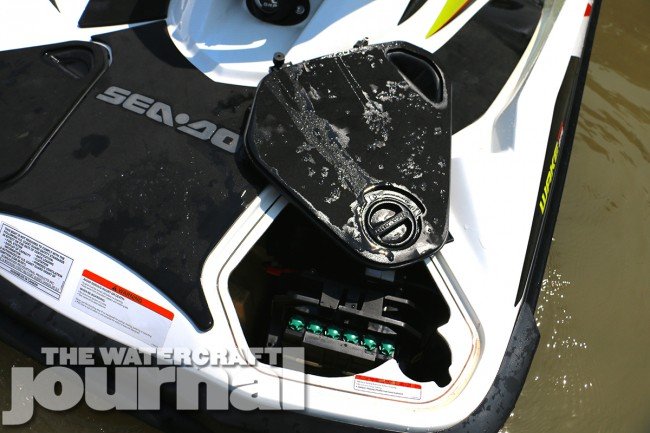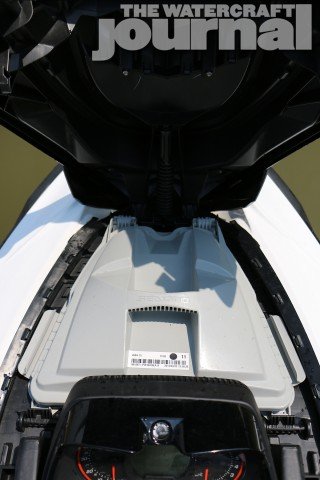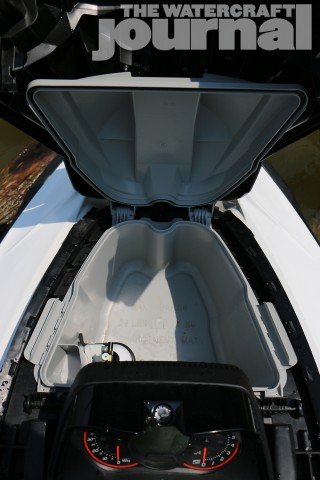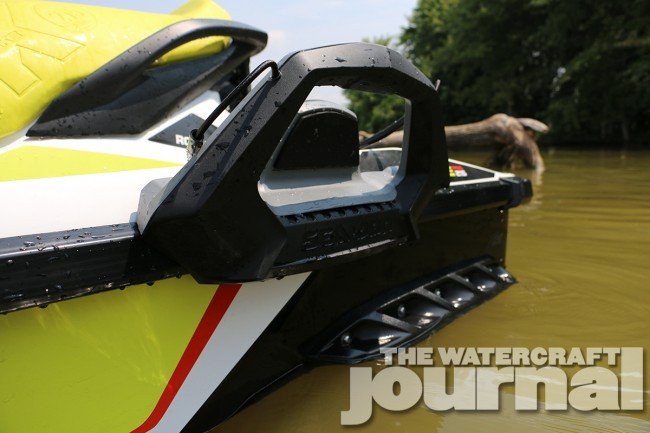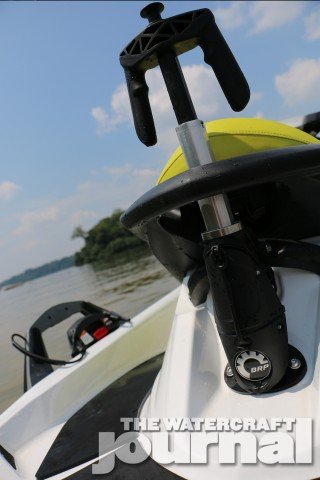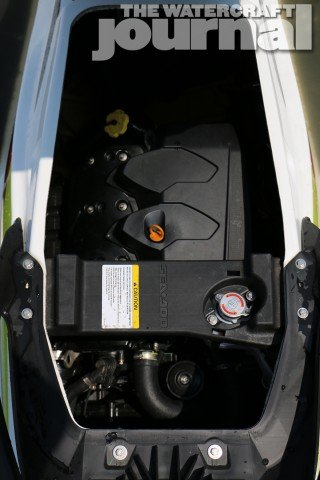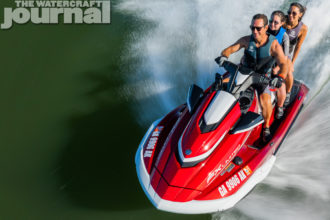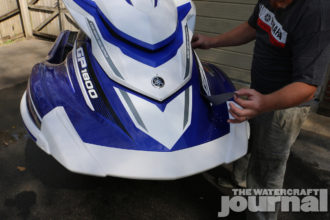It is very likely this will be our last review of a 2015 model before the 2016 Sea-Doos are revealed. There’s so much buzz surrounding the reveal that it’s trickled into a completely unrelated watercraft review. Maybe it’s just because we’re so excited to see what is coming out. Maybe it’s because Sea-Doo never fails to impress when it comes to injecting oodles of innovation into their product. For 2015, the industry’s leading PWC builder held its grip on the largest marketshare thanks in large part to the entry point Spark. Equally, Sea-Doo maintained pointed dominance is certain specific segments, one being tow sports.
Ever since the original Bud Wakeboard Tour in 1992, Sea-Doo has been involved in the evolution of wakeboarding and wakeskating. Its involvement and support of the Nike Wakeskate Team has provided valuable insight in developing new product, and continues to support team riders, Ben Horan, Matt Manzari, Andrew Pastura, Nick Taylor and Silas Thurman.

Based on the same S3 hull shared with all GTX and RXT models, the Wake Pro 215 makes good use of the tiered hull design.
Above left: Same with all (non-suspension) GTX and RXT models, removable rear panels allow easy access to the iBR (Intelligent Brake & Reverse motor) and batter bank. Above right: A quick-release filler cap accesses the Wake’s 15.9 gallons of fuel capacity.
Sea-Doo’s introduction of tow sports-targeted watercraft was a bold one 8 years ago. Since that first unveiling, the Wake models (in all of their formats) have progressed dramatically. Today’s highest-equipped Wake craft is the Wake Pro 215, a supercharged, stable and sophisticated machine that offers more than what is listed on the page. Based upon Sea-Doo’s larger S3 hull that is shared with all RXT and GTX full-sized three-seater runabouts, the stepped design employs offshore race boat tactics to reduce drag while improving surface adhesion. When gliding across flat water, the S3 tracks like a high speed monorail, never wavering or wagging.
Sea-Doo engineers are credited with mastering the art of PWC ergonomics, particularly in the seat and footwells. The large single-piece scalloped seat hinges on a gas shock, indexing high allowing maximum access to the engine compartment without watching your seat float away. The bench is smartly narrowed at the driver’s knees and broadened at the seat, with wide, moderately angled coves for multiple foot placement options. Another benefit from sharing the S3 platform is the 5-point tilt steering that articulates the entire gauge cluster as the bars move up and down. And all readout and operation controls are wisely integrated into the steering.
Above: The Wake Pro 215 comes with Sea-Doo’s watertight front storage bin, accounting for part of the PWC’s 13.7 gallons of storage.
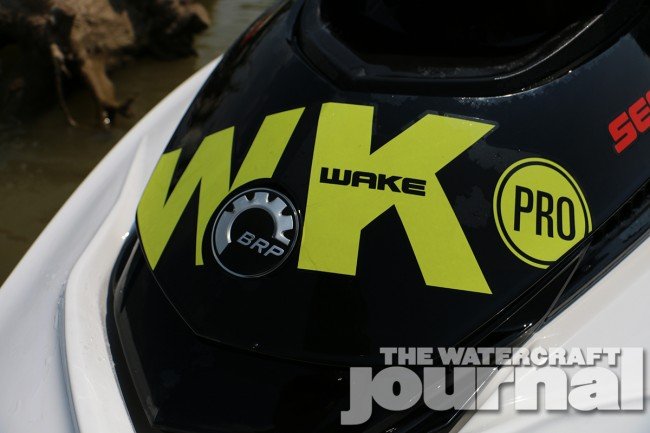
Sea-Doo has been involved in wake sports since the first Bud Wakeboard Tour in 1993 when riders boarded behind GTXs.
Yet, the Wake Pro 215 is much more than merely a rebadged GTX. The Pro includes much of the same equipment as its smaller, naturally-aspirated sibling, the Wake 155, namely a detachable board rack that features a smart snap-and-latch locking system and dual bungee cords to secure any wakeskate or wakeboard; and a three-place adjustable/retractable ski pylon. The pylon can extend high above the rear handrail to pull a full-sized adult out of the water, a raft full of screaming kids or even another PWC (don’t ask us how we know), or retract below the handgrip allowing reboarding passengers to use the folding swim step and railing without interference. Topped with an eye hook, double handgrips, and even a rubber hoop, the pylon is a cinch to tether your ski rope and ride.
In the bow, the Pro 215 is provided with the same watertight locking storage bin found in top-of-the-line GTX models that snugly snaps in place beneath the hood with two tabs. The Pro 215 also includes the VTS (Variable Trim System) toggle on the handlebars (rather than needing to scroll through settings prompts in the dash), assisting in finding the right trim angle while towing or just riding. But the biggest advancement and coolest feature on the Pro is its unique use of Sea-Doo’s proprietary iTC (Intelligent Throttle Control) system.
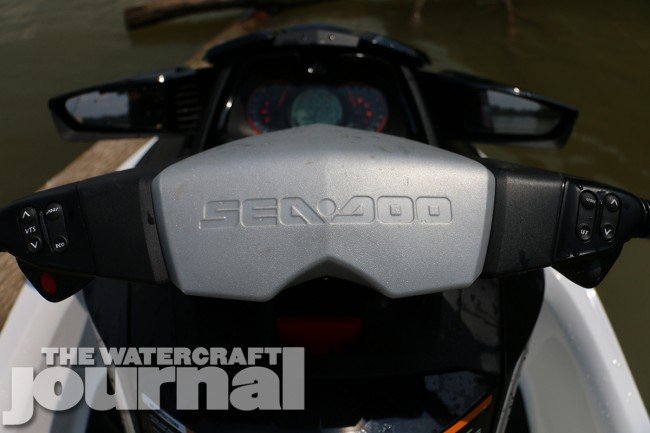
All S3-based watercraft all share the same 5-point adjustable tilt steering system that incorporates the entire gauge pod for unobstructed viewing.
Above left: The retractable ski pylon is sturdy and can extend high above the rear seat or retract flush with the rear handrail. Above right: All Wake models include this removable, locking board rack.
Although all iTC-equipped Sea-Doo watercraft come with a selection of on-the-fly engine map tunes – between “Touring”, “Sport” and “Eco” modes – the Wake Pro 215 also includes a catalog of “Wake Mode” select tunes. These five pre-programmed engine maps manage the supercharged 3-cylinder 1,494cc Rotax engine’s throttle response and acceleration curve, ranging from mild to aggressive. This way, the driver can better manage how the Wake Pro 215 will launch when towing a wakeboarder or towable. Although nowhere near where it could be, the seeds of Sea-Doo’s Wake modes could blossom into what could be (eventually) anti-cavitation “traction control” for hard, aggressive launches.
America’s Motor Sports – Middle Tennessee’s leading family of Sea-Doo dealerships – provided The Watercraft Journal with a new 2015 Sea-Doo Wake Pro 215 to put to the test. On two separate occasions we romped on the Wake Pro 215 to see what she could do. As hinted at above, we spent a great deal focusing on the various Wake modes, seeing how they dampen initial acceleration, permitting for the skier or wakeboarder to pop out of the water with ease. Although nowhere near as prominent as with the smaller Wake 155, a full-sized boarder or a heavy-laden towable can manage to swing the Pro 215’s tail, particularly if the driver isn’t ready to negotiate the shift in weight.
Above left: A closer look at the retractable ski pylon. Above center: The hinged seat reveals the supercharged 1.5L Rotax 3-cylinder which can run on 87 octane (minimum). Above right: The Wake Pro 215 shares the same iridescent livery as its smaller 155HP sibling.

Priced between a 260-horsepower RXT and an equally-powered, lush GTX Limited 215, the Wake Pro 215 is targeted specifically for wake sports and towing and should be compared as such.
We enjoyed our time with the Wake Pro 215 but bristled a little at the $14,349 asking price. For $450 less, one could fetch a 260-horsepower RXT ($13,899 MSRP), or an opulently-loaded GTX Limited 215 for $350 more ($14,699 MSRP). Of course, neither include the specific towing options exclusive to the Wake Pro 215, so choosing the Pro should be specific to wanting to tow wakeboarders or drag the kids around on a raft. The Wake Pro 215 is truly a dedicated machine and has been bred to be so.
Special thanks to America’s Motorsports for use of the 2015 Sea-Doo Wake Pro 215.





